Establishing healthy hydration habits during early childhood is one of the most important investments a parent can make in their child’s lifelong well-being. As toddlers transition from breastmilk or formula to regular fluids, the vessel that delivers those fluids becomes more than a simple container—it plays a vital role in shaping routines, encouraging independence, and even promoting optimal oral motor development. That’s why choosing the best water bottle for toddlers is not a decision to be taken lightly. From materials and spout design to developmental appropriateness and long-term usability, there are numerous considerations that influence which water bottle is best suited for your little one’s unique needs. In this comprehensive guide, we will explore every nuance of toddler water bottles, drawing on insights from pediatricians, speech therapists, and developmental specialists to help you make a truly informed decision.
You may also like: The Ultimate Guide to Choosing the Best Sippy Cup for Healthy Hydration and Growing Kids
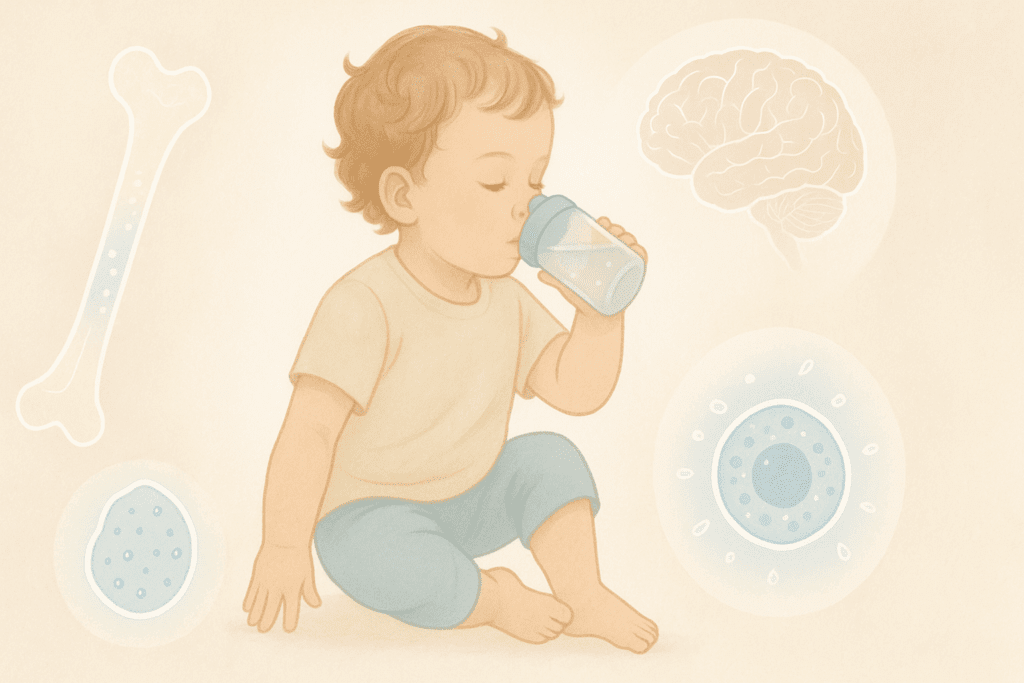
Why Hydration Matters for Toddlers’ Growth and Cognitive Development
Water is the foundation of cellular activity, and in toddlers—whose bodies are rapidly growing and developing—it serves as a critical nutrient. Proper hydration supports not only physical growth but also plays a key role in cognitive function, energy regulation, and emotional stability. Dehydration, even at mild levels, can impair attention, short-term memory, and problem-solving abilities in children. Since toddlers often cannot express thirst clearly or may resist drinking plain water, the delivery method becomes crucial in helping them stay consistently hydrated throughout the day.
Using the best water bottle for toddlers can encourage regular sips and normalize the act of drinking water. Some bottles are ergonomically designed to fit tiny hands, while others are constructed to prevent spills—both of which support a toddler’s autonomy and minimize the distractions and accidents that can derail hydration efforts. A good water bottle can turn drinking into a fun, familiar, and comfortable habit, reinforcing the child’s developing sense of control and responsibility.
How to Assess a Toddler’s Readiness for Transitioning to a Water Bottle
Introducing a water bottle is an important developmental milestone, but timing is essential. Most pediatricians recommend beginning the transition to water around six months of age, often through small sips from a cup or training bottle during meals. However, the full switch to a water bottle often aligns with weaning from the breast or bottle, typically between 12 and 24 months. Readiness can vary from child to child and may depend on oral motor strength, coordination, and comfort with independent drinking.
A toddler ready to use a water bottle will generally exhibit an ability to sit upright unsupported, reach for objects, and manipulate them with some degree of accuracy. These skills are prerequisites for managing a water bottle independently. Choosing the best toddler water bottle at this stage is essential—it should support this new independence without being overly complicated, heavy, or difficult to clean. Parents should look for signs that the toddler is interested in mimicking adult behavior, such as attempting to drink from a parent’s cup or showing curiosity about how a bottle works.
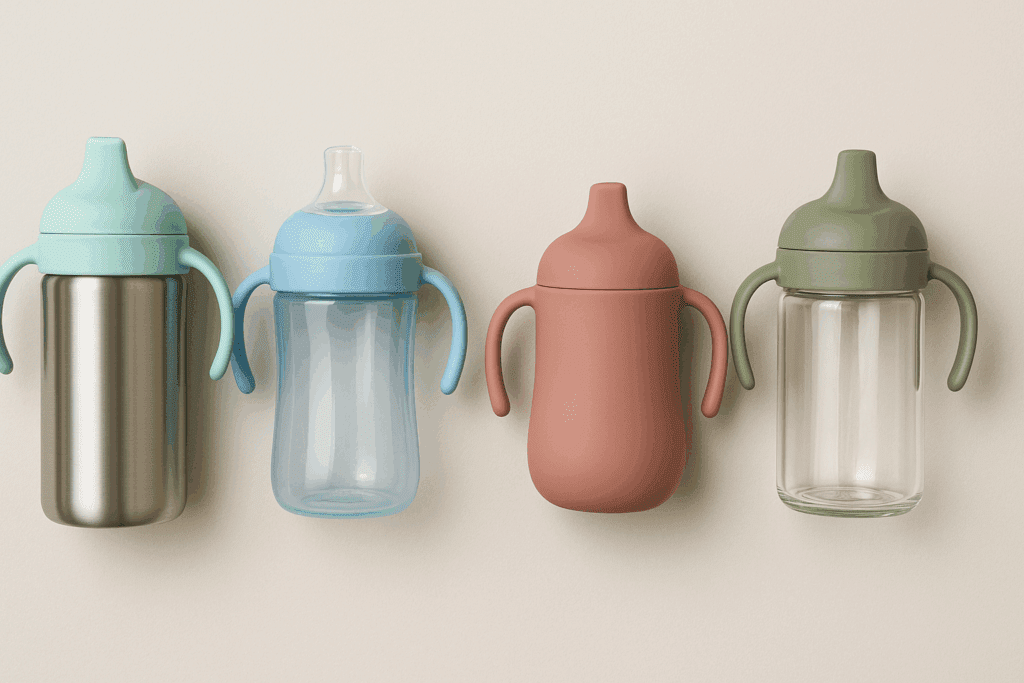
Materials Matter: Choosing Safe and Durable Water Bottle Construction
When selecting the best water bottle for toddlers, material safety should be one of the primary concerns. Toddlers often drop, bite, chew, and explore objects with their mouths, making it essential that the water bottle you choose is made of non-toxic, BPA-free materials. Common options include stainless steel, silicone, Tritan plastic, and glass. Each material comes with its own advantages and limitations.
Stainless steel is known for its durability and insulation properties, keeping drinks cool for longer periods. It’s also highly resistant to bacteria buildup and is often recommended for families who are frequently on the go. However, stainless steel bottles may be heavier than plastic alternatives, making them less ideal for very young toddlers.
Tritan plastic offers a lightweight, shatterproof alternative that is free from harmful chemicals and can be molded into a variety of ergonomic shapes. While not as thermally insulating as stainless steel, Tritan bottles are easy to carry, often colorful, and available in multiple sizes and designs.
Silicone is gaining popularity for its soft, flexible nature, which makes it gentle on gums and easy for toddlers to grip. Some bottles even incorporate silicone straws or spouts for added comfort. Glass, though hygienic and eco-friendly, is generally not recommended for toddlers due to the high risk of breakage.
Ultimately, the best toddler water bottle will strike a balance between safety, usability, and longevity. Parents should prioritize bottles that have undergone third-party safety testing and are labeled as food-grade or pediatrician-approved.
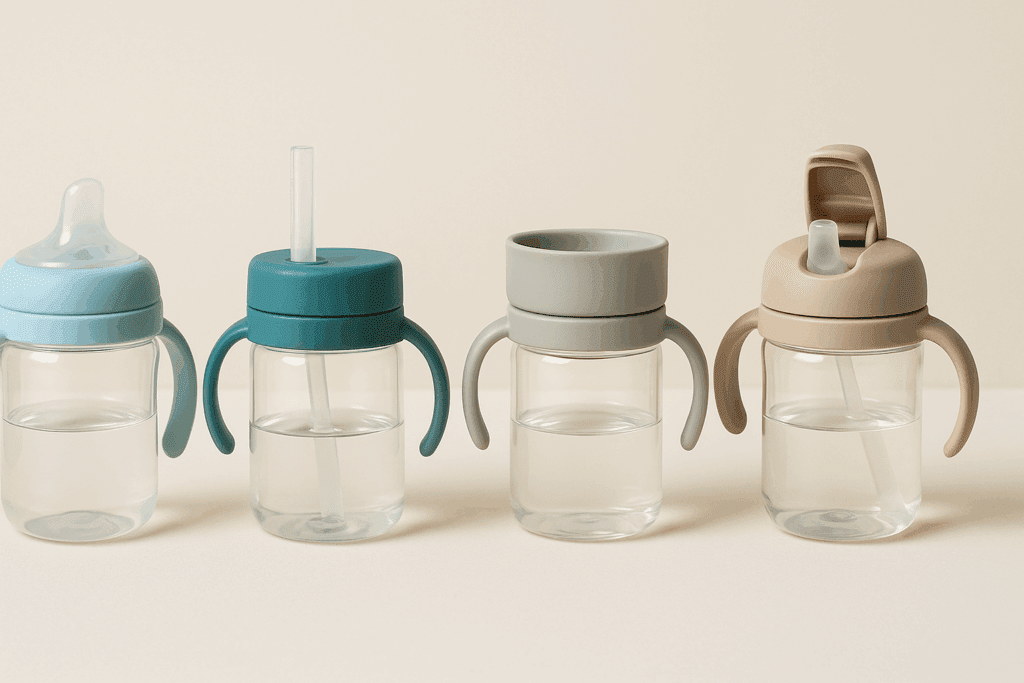
Spouts, Straws, and Lids: How Design Influences Hydration and Oral Development
The type of spout or straw on a toddler water bottle can significantly influence both how well the child hydrates and how their oral muscles develop. Pediatric speech-language pathologists often advise parents to avoid hard spouts, which may impede natural tongue movement and could potentially contribute to delayed speech development if used over long periods. Instead, they often recommend soft silicone spouts or open-cup training lids that promote a more natural tongue posture and swallowing motion.
Straw bottles are increasingly recommended because they encourage proper oral motor function and help strengthen the muscles involved in speech. They also reduce the risk of tooth decay compared to bottles with constant spout exposure, which may lead to sugary drink pooling around the teeth if used with anything other than water.
Flip lids, push-button tops, and leak-proof seals also play a role in usability and hygiene. While leak-proof designs are excellent for travel and daycare, they may be slightly more challenging to clean thoroughly. Parents should weigh convenience against cleanliness, ensuring that whichever bottle they choose can be disassembled easily and washed without leaving hidden bacteria traps.
Why the Best Water Bottle for Toddlers Supports Healthy Hydration Habits Early On
The best water bottle for toddlers does more than simply dispense liquid. It fosters an environment in which the child feels encouraged to hydrate consistently and without frustration. A well-designed bottle will promote autonomy by being easy for small hands to hold and operate. It will also feel rewarding to use, whether due to a favorite character design, fun color, or a satisfying sip mechanism. Positive reinforcement around water consumption can establish hydration as a pleasurable, normalized behavior—something the child looks forward to rather than resists.
This behavioral conditioning is particularly important given that toddlers are often distracted by play or resistant to new routines. If the water bottle feels like “theirs” in both form and function, children are far more likely to use it regularly. Consistent access to water through an inviting and personalized bottle sets a strong foundation for hydration habits that persist through childhood and beyond.
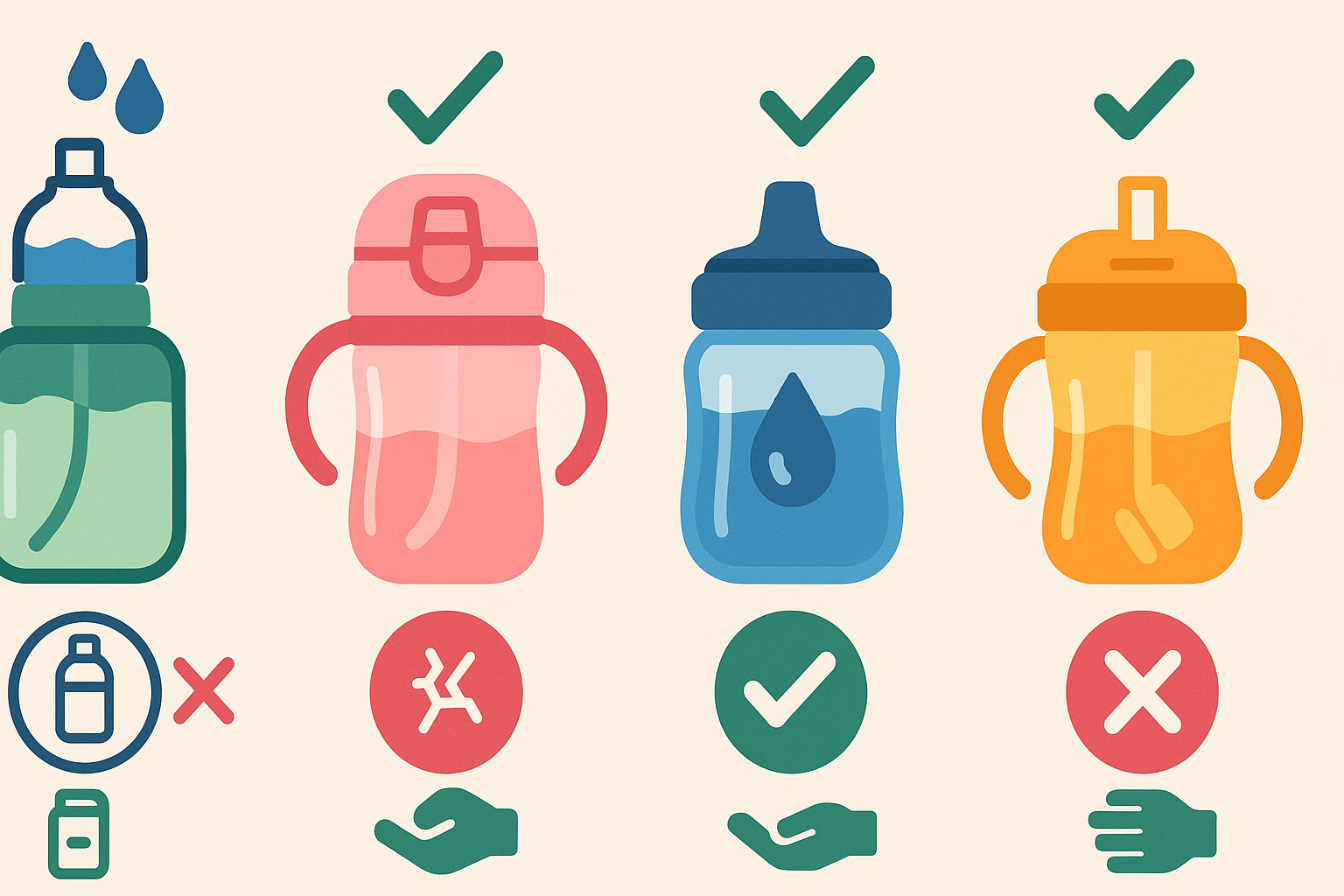
Comparing the Best Toddler Water Bottle Features: What Really Matters
With a saturated market of toddler water bottles boasting an array of features, it can be difficult for parents to determine which attributes are genuinely beneficial. While flashy patterns and licensed characters may grab a child’s attention, the best toddler water bottle will shine in more practical areas—such as ease of cleaning, leak resistance, durability, and ergonomics.
Ease of cleaning is often overlooked but is among the most crucial factors for toddler health. Bottles with too many parts, narrow crevices, or complex valves can harbor mold and bacteria, especially if not cleaned daily. Ideally, a toddler water bottle should be top-rack dishwasher safe or allow for complete manual disassembly and scrubbing.
Leak resistance is essential for parents who carry bottles in diaper bags or allow children to roam with their drinks. Look for features like silicone seals, locking lids, or internal pressure valves that prevent accidental spills without being difficult for the child to open.
Ergonomics also deserve attention. Many of the best water bottles for toddlers incorporate grippy textures, contoured sides, and handles that support the child’s natural grasp and hand strength. Some even feature base stabilizers to prevent toppling when placed on uneven surfaces.
Common Mistakes Parents Make When Selecting Toddler Water Bottles
Despite the abundance of high-quality options on the market, many parents unintentionally choose water bottles that are inappropriate for their child’s stage of development. One of the most common mistakes is selecting a bottle based solely on visual appeal or brand loyalty, rather than considering developmental readiness or functional design. Another misstep involves sticking with a training bottle or sippy cup too long, which can hinder oral development and delay the transition to more advanced drinking skills.
Some parents also underestimate the importance of regular cleaning, assuming that water bottles do not require daily sanitization because they contain only water. In reality, moisture combined with warm temperatures creates an ideal breeding ground for bacteria and mold, especially in hard-to-reach internal components. Parents should be wary of any product that is not explicitly labeled as easy to clean and should inspect their toddler’s bottle routinely for signs of buildup or damage.
Finally, it’s important to avoid overengineering. While multi-functional bottles with interchangeable parts or cooling chambers may seem appealing, they can complicate usage and increase the risk of misuse or poor maintenance. The best water bottle for toddlers is often the one that delivers simplicity, safety, and satisfaction without unnecessary complexity.
The Role of Routine: How Daily Use Reinforces Healthy Hydration
Once the right water bottle is selected, the next step is creating a consistent routine that incorporates water intake throughout the day. Toddlers thrive on predictability, and when a water bottle is part of a predictable pattern—such as morning hydration, snack-time sipping, and post-play refreshment—it becomes a dependable companion in their daily rhythm.
Parents can facilitate this habit by placing the toddler water bottle in a visible and accessible location, gently prompting use during routine transitions (such as after diaper changes or before naps), and modeling regular hydration themselves. Over time, toddlers will begin to self-regulate their thirst cues and reach for their water bottle without external reminders.
Importantly, parents should avoid using sugary drinks or juices in these bottles, even on special occasions. Associating the bottle with water only helps establish clear expectations and reduces the risk of dental issues. When children learn that their water bottle is a consistent source of comfort, refreshment, and health, it reinforces hydration as a lifelong behavior, not just a parental directive.
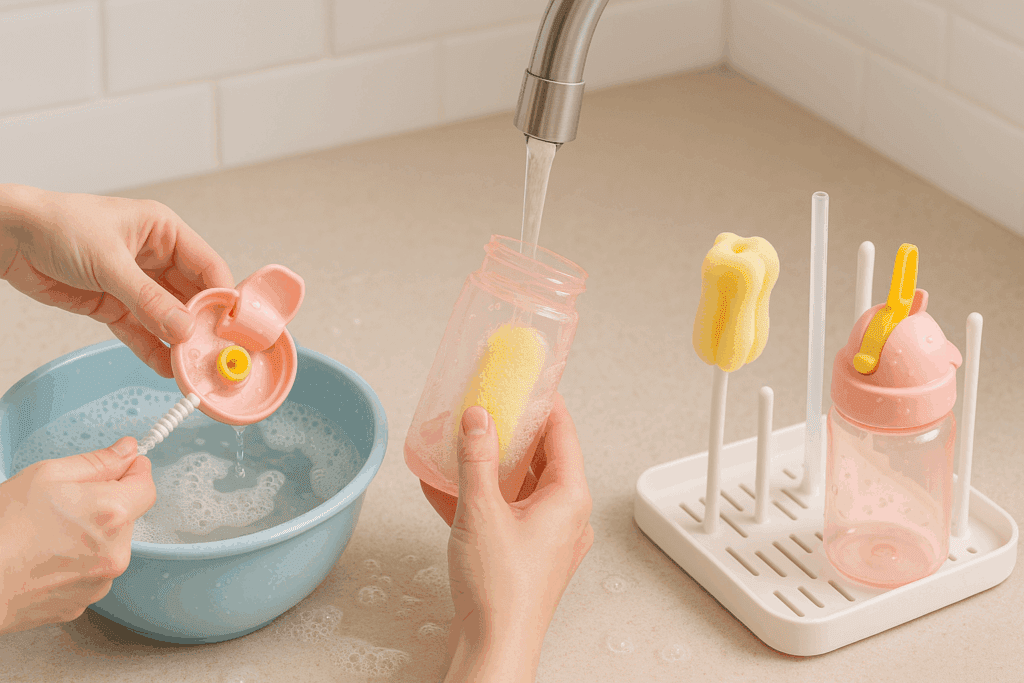
How to Clean and Maintain the Best Water Bottle for Toddlers
Proper maintenance is critical to preserving the integrity of a toddler’s water bottle and ensuring that it remains a safe, hygienic tool. Most manufacturers provide cleaning guidelines, but as a general rule, every part of the bottle—including lids, straws, and seals—should be cleaned daily. If dishwasher safe, use the top rack with a sanitizing cycle. For bottles that require manual washing, a bottle brush and straw cleaner should be used to scrub all interior surfaces, including tight spaces that can accumulate film or residue.
Once a week, consider soaking the components in a vinegar-water solution or a mild baby-safe sterilizing solution to remove any lingering bacteria. Avoid bleach or harsh chemicals that could compromise the bottle’s integrity or leave behind toxic residues. Always allow the bottle to air dry completely before reassembling it, as trapped moisture can promote mold growth.
It is also essential to routinely inspect the bottle for signs of wear and tear. Cracks, discoloration, or persistent odors may indicate that it’s time to replace the bottle. Parents should err on the side of caution—if in doubt, throw it out. A high-quality toddler water bottle may come at a premium price, but its role in promoting hydration and protecting health makes it a wise and worthwhile investment.
Toddler Testimonials: What Real Parents Say About Their Favorite Bottles
While expert opinions and clinical research are invaluable, parent feedback often provides the most nuanced and practical insights into which water bottles truly deliver on their promises. Many parents praise stainless steel options for their ability to withstand drops and keep drinks cool throughout the day, even during summer outings. Others favor lightweight plastic models with built-in straws for daycare use, noting that they’re less likely to spill in backpacks or cubbies.
One recurring theme across testimonials is the importance of ease-of-use—for both toddlers and parents. Bottles that are intuitive to open, hold, and clean tend to receive the highest marks. Parents also value products that grow with the child, such as modular bottles that can be adapted with new spouts or lids as skills develop.
Some parents report that involving the child in the selection process—letting them pick the color, pattern, or character—greatly increases their willingness to use the bottle consistently. Others find success in purchasing duplicate bottles to keep one at home and one in the diaper bag, ensuring hydration is never compromised due to forgetfulness.
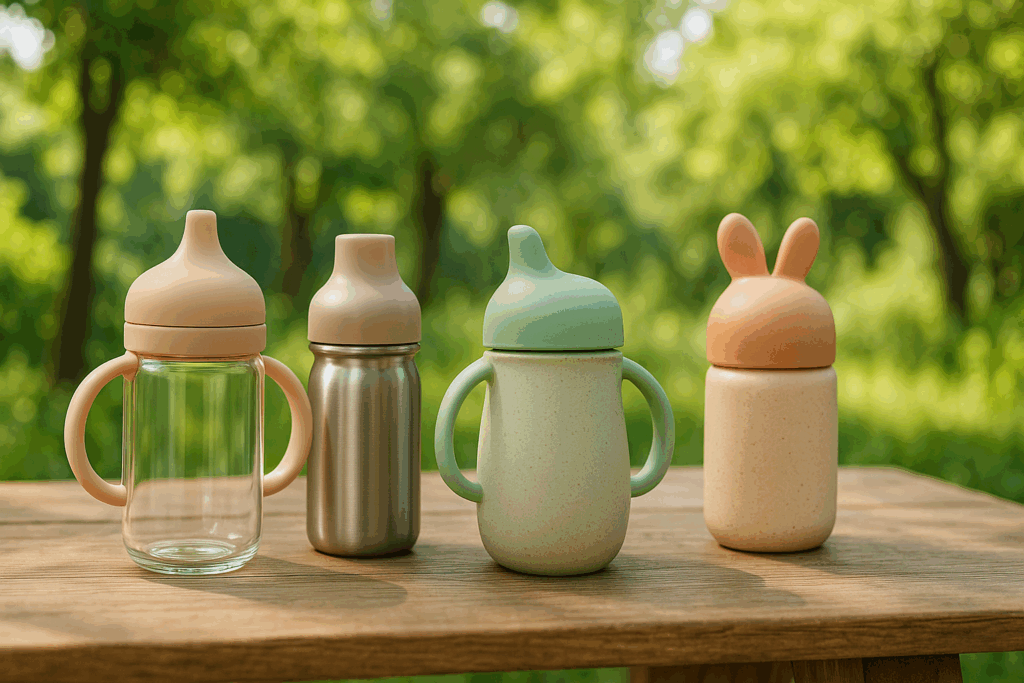
Sustainable Choices: Eco-Friendly Toddler Bottles for a Healthier Planet
For environmentally conscious families, choosing a toddler water bottle extends beyond the child’s health—it’s also about reducing waste and modeling responsible consumption. Many of the best water bottles for toddlers are now made from recyclable or biodegradable materials, while others are designed to last for years, reducing the need for frequent replacements.
Stainless steel and glass are both considered eco-friendly due to their longevity and recyclability. Some manufacturers also offer take-back programs or use post-consumer recycled materials in their packaging. By selecting a sustainable option, parents can teach children about environmental responsibility from an early age, reinforcing that their daily habits—such as drinking from a reusable bottle—can have a broader positive impact.
These choices, while seemingly small, contribute to a healthier ecosystem and support a growing movement toward responsible parenting practices that extend beyond the home and into the world at large.
Frequently Asked Questions: Choosing the Best Water Bottle for Toddlers
What makes the best water bottle for toddlers suitable for both home and travel use?
A top-quality toddler water bottle that excels at both home and on-the-go hydration should strike a balance between convenience, spill resistance, and developmental appropriateness. At home, features like easy-grip handles, wide openings for refills, and compatibility with dishwashers make daily use practical and stress-free. For travel, compact design and vacuum insulation become more important to maintain temperature and prevent leaks in bags or car seats. Many of the best water bottle for toddlers options are designed to accommodate different settings with adaptable lids or modular components, such as a straw lid that can be replaced with a sippy or open cup insert. Additionally, portability features like carrying loops or carabiner clips allow parents to secure bottles during outings, ensuring consistent hydration even during long errands or outdoor play.
How can parents use water bottles to teach toddlers about autonomy and responsibility?
Introducing a toddler to their own water bottle offers more than hydration—it’s an opportunity to nurture independence. Parents can start by letting children choose their own bottle from a curated selection, which reinforces a sense of ownership and pride. During the day, toddlers can be encouraged to remember their bottle, carry it, and place it in designated spots at mealtimes or play areas. These simple rituals help reinforce executive function skills, such as planning and organization, in age-appropriate ways. Over time, this turns into a valuable habit-forming process where toddlers begin to self-monitor their hydration, especially when the bottle becomes a consistent part of their routine. The best toddler water bottle supports this development by being manageable in weight, intuitive in design, and rewarding in use.
Are there psychological benefits to using a personalized water bottle in early childhood?
Yes, the psychological benefits of personalization in early childhood are substantial. Children are more likely to form emotional connections with objects that feel uniquely theirs, and a personalized water bottle can reinforce their sense of identity and autonomy. When toddlers use a bottle that reflects their preferences—whether it’s their favorite color, animal, or cartoon character—they are more likely to engage with it regularly, strengthening hydration habits through emotional association. This connection also creates a comforting routine, especially in environments like daycare or preschool where familiarity helps toddlers adjust to new settings. By offering consistency, predictability, and a sense of control, the best water bottle for toddlers supports emotional security while fostering positive self-expression.
What are some unexpected features that improve toddler water bottle functionality?
While basic leak-proofing and ergonomic handles are widely expected, there are several lesser-known features that greatly improve the functionality of a toddler water bottle. One such feature is a weighted straw that allows toddlers to drink from any angle—particularly useful for children who like to recline or tip the bottle. Some models include thermal indicators that change color with temperature shifts, providing a visual cue for both parents and children regarding water freshness. Bottles with built-in timers or hydration reminder lights can subtly encourage consistent intake, especially in older toddlers. Anti-slip bases help keep the bottle stable on uneven surfaces, while modular design allows the same bottle to grow with the child by switching out lids and spouts. These enhancements elevate the best toddler water bottle from a simple container to a multifunctional developmental tool.
How do hydration habits in toddlerhood impact long-term beverage preferences?
Early exposure to water as the default beverage has lasting effects on a child’s future preferences. When toddlers are routinely offered water in an appealing format—such as through the best water bottle for toddlers—they internalize it as the standard for quenching thirst. This normalizes water consumption and reduces reliance on sweetened beverages, which can shape long-term health outcomes by minimizing the risk of childhood obesity and tooth decay. Research in pediatric nutrition also shows that early palate training through water-focused routines can influence children’s choices well into adolescence. The bottle thus serves not just a functional role but a psychological one, creating a foundation of hydration preferences that align with lifelong wellness.
What distinguishes the best toddler water bottle for children with sensory sensitivities?
For toddlers with sensory processing differences, the texture, temperature, weight, and even the sound of a bottle can significantly affect usability. The best toddler water bottle for sensory-sensitive children is typically constructed from materials like soft silicone or smooth Tritan plastic, which offer gentle tactile feedback. Features like a quiet lid closure, smooth-flow straws, and non-slip grips can help minimize overstimulation. Additionally, muted colors or visually simple designs are often preferred, as they reduce visual clutter and allow the child to focus on the act of drinking. Some parents also find success with bottles that allow for temperature insulation, which prevents condensation and keeps cold beverages from feeling uncomfortably wet or slippery. Customization options—like interchangeable sleeves—further enable parents to tailor the sensory experience to suit their child’s needs.
How do cultural practices influence the selection of the best water bottle for toddlers?
Cultural norms often shape both the design and the usage patterns of toddler water bottles across different communities. In some cultures, it’s customary to provide herbal infusions or room-temperature water rather than chilled beverages, which necessitates bottles that are easy to clean and suitable for warm liquids. Other cultures emphasize open cup training at earlier ages, leading to a preference for hybrid bottles that mimic cup-drinking behavior while offering spill resistance. Aesthetic preferences also play a role, with parents in some regions favoring minimalist designs and others gravitating toward colorful, animated bottles. Recognizing these nuances helps global manufacturers adapt their offerings to better suit family values and routines. As a result, the best water bottle for toddlers is not always universal—it must harmonize with a family’s traditions and daily lifestyle.
What innovations are emerging in the toddler water bottle market?
The toddler water bottle industry is evolving quickly, with new innovations focusing on smart technology, sustainability, and modularity. Some modern bottles now come equipped with Bluetooth hydration trackers that sync with caregiver apps to monitor fluid intake in real-time. Others feature UV sterilization lids that automatically sanitize the drinking spout after each use—a particularly attractive option for travel or public daycare environments. On the sustainability front, companies are embracing plant-based plastics and offering repairable or upgradable components to extend the product lifespan. Modular designs are gaining popularity, allowing parents to swap out lids, handles, and spouts as their child grows. These features redefine what it means to be the best toddler water bottle by integrating technology and longevity with traditional child-friendly design.
How can pediatricians and speech therapists help guide bottle selection?
Consulting with pediatric professionals can provide valuable insight into choosing the best water bottle for toddlers based on specific developmental milestones or health concerns. Pediatricians may suggest bottles with certain features to encourage hydration in children with medical conditions like frequent UTIs, constipation, or feeding difficulties. Speech-language pathologists can assess oral motor development and recommend straw-based systems over spouts to support speech articulation and jaw strength. In cases of delayed oral development, therapists may even prescribe graduated transition systems, where the child progresses from assisted sipping to full self-feeding. These specialists provide targeted, evidence-based recommendations that go beyond general market reviews, helping parents match their child’s individual needs to the appropriate product features.
What role do environmental and ethical considerations play in choosing the best water bottle for toddlers?
Eco-conscious parenting is influencing how families evaluate toddler products, and water bottles are no exception. Parents increasingly seek out brands that emphasize ethical manufacturing, sustainable sourcing, and reduced packaging waste. Certifications like BPA-free, phthalate-free, and carbon-neutral have become deciding factors for families committed to environmentally responsible lifestyles. Companies that produce the best water bottle for toddlers often go further by offering bottle recycling programs, using biodegradable shipping materials, or partnering with environmental nonprofits. Ethical labor practices are also part of this evaluation, as parents look to support companies that uphold fair wages and safe working conditions. By aligning their purchases with their values, parents demonstrate to their children that health and sustainability are not mutually exclusive—they are, in fact, deeply interconnected.
Conclusion: Final Reflections: Choosing the Best Water Bottle for Toddlers as a Lifelong Health Strategy
In the quest to raise healthy, hydrated, and happy children, the humble water bottle emerges as an unexpectedly powerful tool. Choosing the best water bottle for toddlers is not just a matter of convenience or style—it’s an investment in routine, health literacy, and independence. The right bottle encourages consistent hydration, supports oral motor development, and reinforces positive associations with healthy choices from a young age.
By considering safety, material, design, usability, and sustainability, parents can make an informed decision that benefits both the child and the planet. Each sip from a carefully chosen water bottle becomes an act of nurturing—an opportunity to build confidence, establish autonomy, and prioritize well-being.
In a world filled with distractions, sugar-laden beverages, and disposable culture, the act of handing a toddler their own thoughtfully selected water bottle is quietly revolutionary. It is a message that their health matters, their habits are worth shaping, and their future deserves intention. Let the bottle they reach for every day be one that empowers them to grow strong, think clearly, and feel loved.



